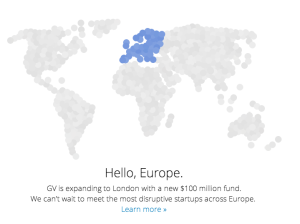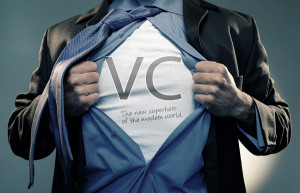 Venture capital and crowdfunding are typically thought of as an unlikely match. Crowdfunding is largely driven by the concept of democratization of finance, in which the power is placed into the hands of the people. This ideology is the polar opposite of venture capital, a sector in which many professionals would likely consider crowdfunding to be based on grandiose and utopian concepts.
Venture capital and crowdfunding are typically thought of as an unlikely match. Crowdfunding is largely driven by the concept of democratization of finance, in which the power is placed into the hands of the people. This ideology is the polar opposite of venture capital, a sector in which many professionals would likely consider crowdfunding to be based on grandiose and utopian concepts.
But surprisingly enough, the two have come together in a new and revolutionary initiative. Collaborative Fund, a New York City-based venture capital firm and an early investor in Lyft, Kickstarter, and Reddit, will be partnering with a San Francisco-based equity crowdfunding company called CircleUp.
Collaborative Fund will receive access to the approximately 200 startups on CircleUp, which it analyzes using proprietary algorithmic technology. About 92,000 data points per company are compiled and analyzed by CircleUp. These data points include financials, brand, leadership, customer engagement, and deal and exit potential.
Craig Shapiro, the founder and managing partner of Collaborative Fund, stated that he would never be able to be as efficient as he is if he didn’t have the technology of CircleUp. When CircleUp features startups on its platform, it gets a number of investors with deep pockets putting money behind these startups. This increases exposure for consumer-product startups.
The venture capitalists play an important role in getting investors. If investors see that a professional venture capitalist has shown interest, they are more likely to invest in a startup. The more money that is invested in startups on CircleUp, the more money the fundraising platform earns. This is because CircleUp earns 5 percent commission on average. This adds up considering that Circle Up has helped over 160 companies raise more than $180 million.
This partnership is likely a bit of foreshadowing for innovations to come in the future. This may be a new chapter for the methods by which startups gain access to money, and the way that investors find startups that are seeking capital. This process is likely to make private financing accessible to a larger group of people.
CircleUp does not use the term “equity crowdfunding” to describe their business. Instead, they market themselves as a pioneer company for “marketplace investing”. The reason for this is that “crowdfunding”, to many people, implies the size of the investments being made. The average investment on CircleUp is currently higher than $100,000, a giant step up from the $15,000 on average that was being invested four years ago when CircleUp began. The term “marketplace investing” shows that the Internet has made it easier than ever before for investors find companies seeking investment.
The relationship between crowdfunding and venture capital is mutually beneficial. Crowdfunding, or marketplace investing, brings investors and entrepreneurs together. Venture capital firms bring greater amounts of money, as well as mentorship in guiding and advising startups.
While this is a harbinger for the future, not all venture capital firms will partner with crowdfunding platforms. Some venture firms will resist change while other will adapt. Nonetheless, this type of partnership is showing a lot of promise. Collaborative Fund’s partnership with CircleUp is proof that in the future we may be able to eliminate the disconnect between the venture capital and crowdfunding industries.

 On May 5th Todd Crosland, the CEO of Seed Equity Ventures, launched a new venture seed fund under Seed Equity Capital Partners, LLC targeting $10 million. This fund was developed to invest in early stage technology startups and will benefit from the vetting, sourcing and due diligence process that is performed by the Seed Equity investment team. The fund is permitted to engage in public fundraising endeavors, since it was filed with the SEC under Rule 506(c). The fund has already produced three investments, including a startup that came out of Techstars London in the UK, Spatch, Inc.
On May 5th Todd Crosland, the CEO of Seed Equity Ventures, launched a new venture seed fund under Seed Equity Capital Partners, LLC targeting $10 million. This fund was developed to invest in early stage technology startups and will benefit from the vetting, sourcing and due diligence process that is performed by the Seed Equity investment team. The fund is permitted to engage in public fundraising endeavors, since it was filed with the SEC under Rule 506(c). The fund has already produced three investments, including a startup that came out of Techstars London in the UK, Spatch, Inc. August 19th, 2014 Todd Crosland announced the official launch of his new U.S. Registered Broker-dealer, Seed Equity Ventures. Seed Equity uses an equity-based crowdfunding platform to connect startup companies with venture capital from all over the globe.
August 19th, 2014 Todd Crosland announced the official launch of his new U.S. Registered Broker-dealer, Seed Equity Ventures. Seed Equity uses an equity-based crowdfunding platform to connect startup companies with venture capital from all over the globe. A recent article on Investor Place talks about how venture capital revolutionized business in the United States. The article goes on to discuss the history of venture capital. The beginnings of the practice are said to have started back in the 1970s where tech gurus like Tom Perkins and Don Valentine saw major advantages to providing capital for startup companies.
A recent article on Investor Place talks about how venture capital revolutionized business in the United States. The article goes on to discuss the history of venture capital. The beginnings of the practice are said to have started back in the 1970s where tech gurus like Tom Perkins and Don Valentine saw major advantages to providing capital for startup companies.